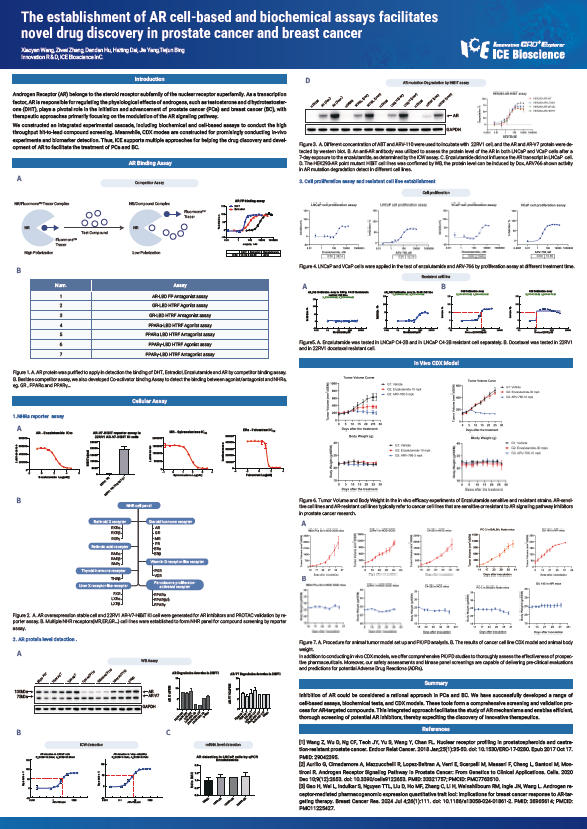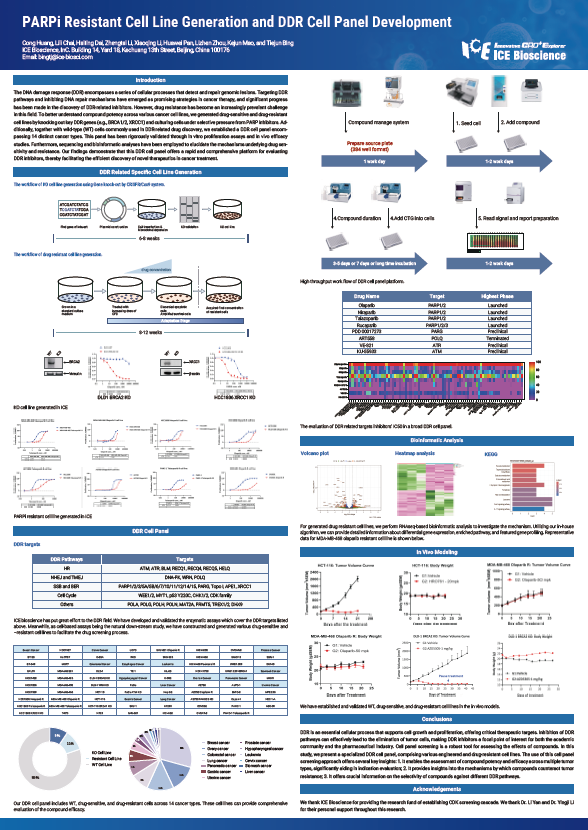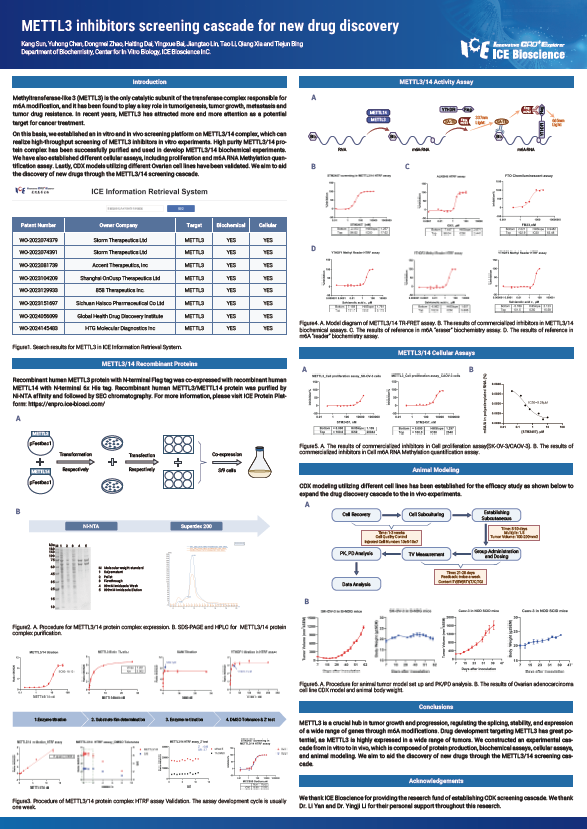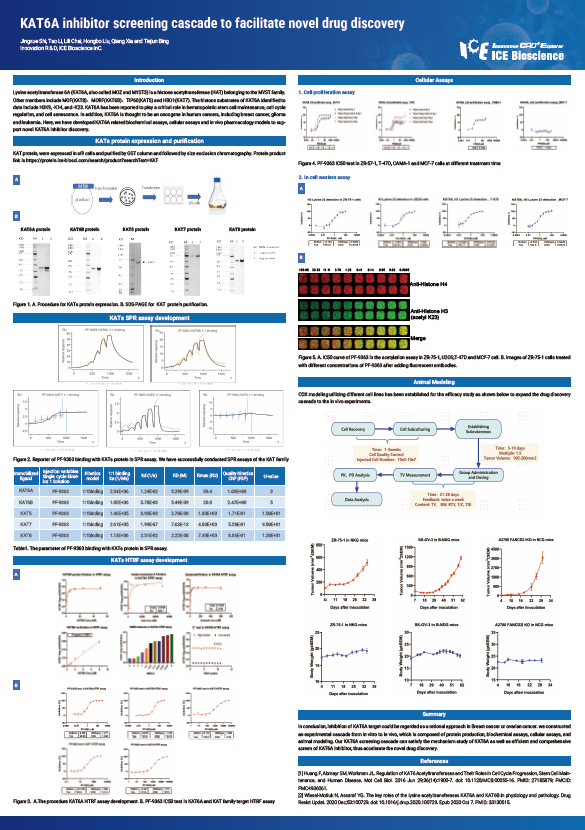
Androgen Receptor (AR) belongs to the steroid receptor subfamily of the nuclear receptor superfamily. As a transcription factor, AR is responsible for regulating the physiological effects of androgens, such as testosterone and dihydrotestosterone (DHT), plays a pivotal role in the initiation and advancement of prostate cancer (PCa) and breast cancer (BC), with therapeutic approaches primarily focusing on the modulation of the AR signaling pathway.
We constructed an integrated experimental cascade, including biochemical and cell-based assays to conduct the high throughput hit-to-lead compound screening. Meanwhile, CDX modes are constructed for promisingly conducting in-vivo experiments and biomarker detection. Thus, ICE supports multiple approaches for helping the drug discovery and development of AR to facilitate the treatment of PCa and BC.

The DNA damage response (DDR) encompasses a series of cellular processes that detect and repair genomic lesions. Targeting DDR pathways and inhibiting DNA repair mechanisms have emerged as promising strategies in cancer therapy, and significant progress has been made in the discovery of DDR-related inhibitors. However, drug resistance has become an increasingly prevalent challenge in this field. To better understand compound potency across various cancer cell lines, we generated drug-sensitive and drug-resistant cell lines by knocking out key DDR genes (e.g., BRCA1/2, XRCC1) and culturing cells under selective pressure from PARP inhibitors. Additionally, together with wild-type (WT) cells commonly used in DDR-related drug discovery, we established a DDR cell panel encompassing 14 distinct cancer types. This panel has been rigorously validated through in vitro proliferation assays and in vivo efficacy studies. Furthermore, sequencing and bioinformatic analyses have been employed to elucidate the mechanisms underlying drug sensitivity and resistance. Our findings demonstrate that this DDR cell panel offers a rapid and comprehensive platform for evaluating DDR inhibitors, thereby facilitating the efficient discovery of novel therapeutics in cancer treatment.

Methyltransferase-like 3 (METTL3) is the only catalytic subunit of the transferase complex responsible for m6A modification, and it has been found to play a key role in tumorigenesis, tumor growth, metastasis and tumor drug resistance. In recent years, METTL3 has attracted more and more attention as a potential target for cancer treatment.
On this basis, we established an in vitro and in vivo screening platform on METTL3/14 complex, which can realize high-throughput screening of METTL3 inhibitors in vitro experiments. High purity METTL3/14 protein complex has been successfully purified and used in develop METTL3/14 biochemical experiments. We have also established different cellular assays, including proliferation and m6A RNA Methylation quantification assay. Lastly, CDX models utilizing different Ovarian cell lines have been validated. We aim to aid the discovery of new drugs through the METTL3/14 screening cascade.

Lysine acetyltransferase 6A (KAT6A, also called MOZ and MYST3) is a histone acetyltransferase (HAT) belonging to the MYST family. Other members include MOF(KAT8)、MORF(KAT6B)、TIP60(KAT5) and HBO1(KAT7). The histone substrates of KAT6A identified to date include H3K9, -K14, and -K23. KAT6A has been reported to play a critical role in hematopoietic stem cell maintenance, cell cycle regulation, and cell senescence. In addition, KAT6A is thought to be an oncogene in human cancers, including breast cancer, glioma and leukemia. Here, we have developed KAT6A related biochemical assays, cellular assays and in vivo pharmacology models to support novel KAT6A inhibitor discovery.